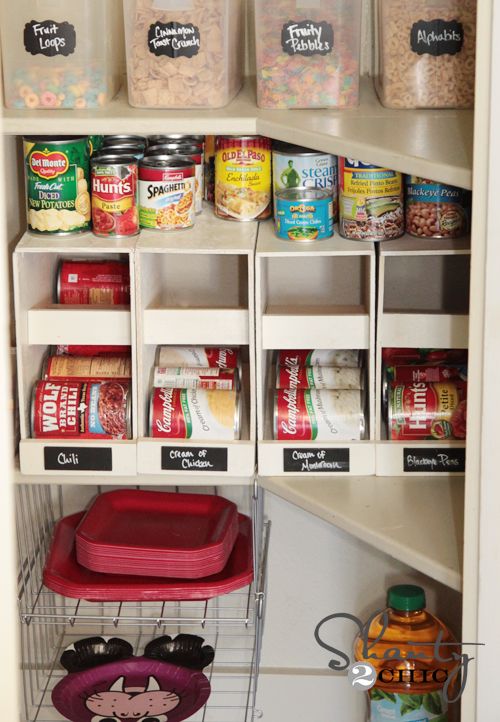Fruits and veggies for baby food
Baby's first foods: The 10 best foods for babies
These 10 first foods are ideal for your baby because they're full of essential nutrients, reasonably priced, easy to prepare, and delicious. Avocados contain healthy fats, while bananas are loaded with potassium. Blueberries are bursting with antioxidants, whereas broccoli offers fiber and folate. Both lentils and meat are packed with protein. Prunes can help with constipation, and yogurt helps form healthy bones and teeth. Sweet potatoes and winter squash are great sources of beta-carotene and vitamin C.
According to the American Academy of Pediatrics, it's important to offer your baby a variety of healthy foods. There are lots of healthy, baby-friendly foods out there, but these 10 recommended by doctors and dietitians alike stand out from the pack. From vitamin-rich fruits and veggies to meats and beans loaded with protein, these superfoods are full of essential nutrients, reasonably priced, easy to prepare, and delicious.
Many are also favorite first foods. Before introducing solids, talk to the doctor about your baby's readiness for solids, and which foods to introduce and when. Then introduce foods one at a time, waiting at least three days after each new food to watch for any allergic reaction.
Avocados
BabyCenter parents are all about avocado as a first food. This buttery fruit-vegetable is rich in healthy unsaturated fats that help boost brain development. In fact, the fat composition of avocados is somewhat similar to that of breast milk.
Serving ideas: Mash avocado with a fork, or make baby guacamole.
Bananas
Known as a good source of potassium, this grab-and-go fruit also contains vitamins B6 and C, fiber, and magnesium.
Serving ideas: Make banana and mango puree. Or, for your little one's first smoothie, puree banana and peach chunks with whole-milk yogurt.
Blueberries
Blueberries are bursting with antioxidants. The deep, brilliant blue of these berries comes from flavonoids that benefit your baby's eyes, brain, and even urinary tract.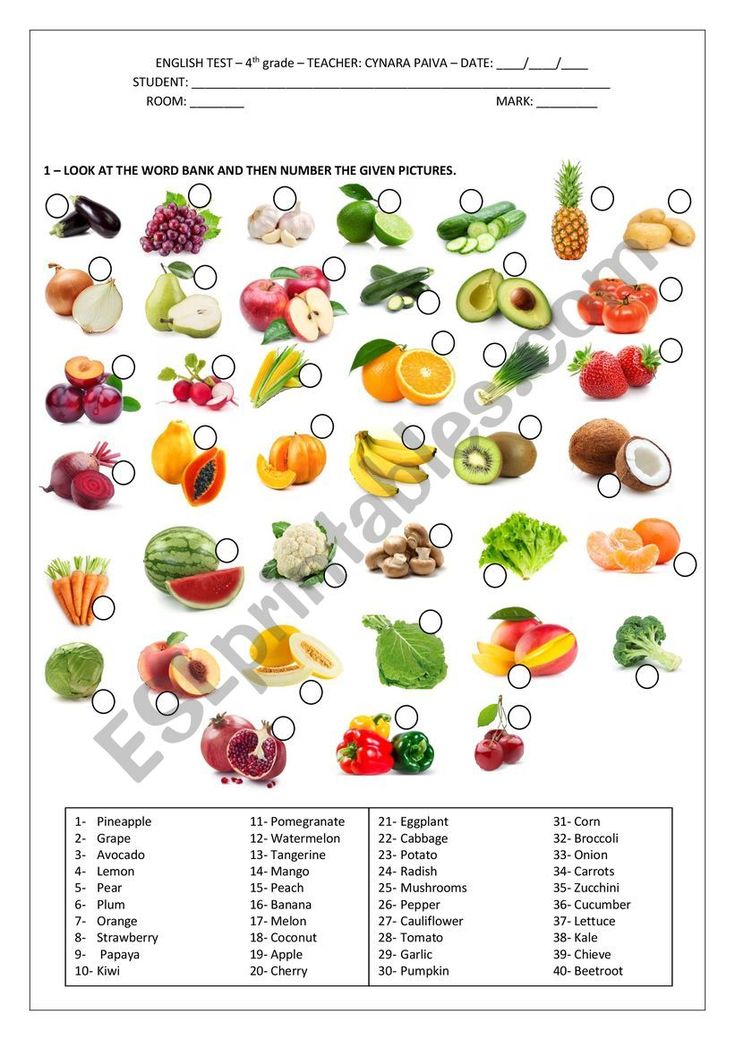
Serving ideas: Blend or mash blueberries well and swirl a spoonful of the juicy purple puree into yogurt, or top silky coconut milk rice pudding with blueberry compote.
Broccoli
This cruciferous vegetable is a rich source of essential nutrients, including fiber, folate, and calcium. Introduce your baby to broccoli's bold flavor early, and you'll be expanding their tastes and encouraging a lifelong love of green vegetables.
Advertisement | page continues below
Serving idea: Steam until soft, cut into pieces small enough for your child to eat safely, and then chill. Steaming takes the bite out of broccoli, and some babies prefer the texture and taste when it's cold.
Lentils
Beans and other legumes pack lots of lean protein and fiber. But unlike larger beans, little lentils simmer into a pleasing mush just right for baby bites. They're also one of the cheapest healthy foods you can buy.
Serving ideas: Cook finely diced carrots along with the lentils. As your baby gets older, double up on nutrient-rich foods by making lentil and spinach stew.
As your baby gets older, double up on nutrient-rich foods by making lentil and spinach stew.
Meat
Lack of iron can cause anemia. The American Academy of Pediatrics recommends meat as a first food because it's such a great source of protein, zinc, and iron, especially red meat and dark poultry meat. Plus, babies absorb iron more easily from meat than from iron-fortified cereals, another common first food.
Serving ideas: If your baby is new to solids, try our easy turkey or chicken puree recipe. As they get older, introduce new flavors with chicken curry with green beans and zucchini or shepherd's pie.
Prunes
Whether you call them "prunes" or "dried plums," these humble fruits don't sound glamorous – but they're soft, sweet, and full of fiber. Your baby may suffer from constipation when switching to solids, as it's a big change for their system. Add pureed prunes to your baby's diet to aid digestion and keep things moving.
Serving ideas: Serve pureed prunes alone or mixed with other foods, such as oatmeal, cereal, or applesauce, for a naturally sweet treat.
Sweet potatoes
Sweet potatoes are one of the more popular first foods for babies, who tend to like both their sweetness and texture. These colorful root vegetables are packed with beta-carotene, vitamin C, and minerals, including iron and copper.
Serving ideas: Serve sweet potato puree alone or swirled into pureed chicken or turkey.
Winter squash
Orange- or yellow-fleshed hard winter squashes such as butternut, acorn, and pumpkin boast many benefits, one of which is they're exceptionally rich in beta-carotene, recognized for being great for eyes. Squash is also an excellent source of vitamin C. Natural sweetness and a creamy texture add to the appeal of winter varieties.
Serving ideas: Roast a winter squash like butternut, scoop out the flesh, and puree it for an easy first food. As your baby gets older, introduce new flavors and textures with dishes like smashed chickpea and butternut chili.
Yogurt
Creamy yogurt is rich in calcium and vitamin D, necessary for healthy bones and teeth.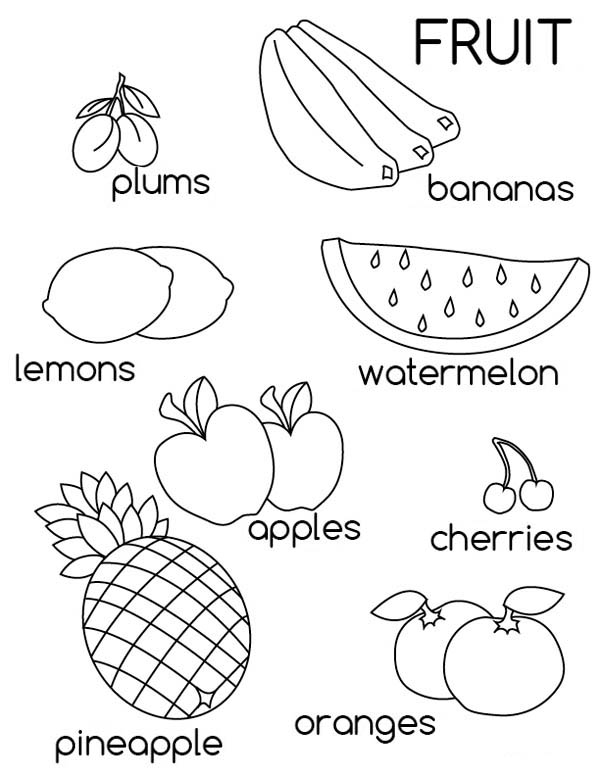 Your baby can have it at 4 to 6 months, long before they'll be ready for cow's milk.
Your baby can have it at 4 to 6 months, long before they'll be ready for cow's milk.
Opt for plain yogurt with no added sugar. Also look for a brand with the most live cultures, which help regulate the good bacteria in your baby's digestive tract. Make sure you pick up whole-milk yogurt – babies need the calories from fat.
Serving ideas: Yogurt is fine on its own, or swirl in pureed berries or other fresh fruit, applesauce, or mashed avocado.
Was this article helpful?
Yes
No
6 Baby Food Combinations (Stage 2)
6 easy and tasty baby food combination recipes: Sweet Potato Apple, Asparagus Apple, Blueberry Banana Quinoa Flax, Peach Pear, Avocado Peach Pineapple Kale and Pineapple Mango.
Earlier this week I shared a recipe for carrot baby food, which is a great first food for babies. Today I’m sharing 6 baby food combinations that work for babies who are a little older, around 6-8 months. The combos I’m sharing are mostly fruit and vegetables, but there is one combo with quinoa and flaxseed as well. All of these combos have been taste-tested and approved by Olivia. She gobbled up each of them!
All of these combos have been taste-tested and approved by Olivia. She gobbled up each of them!
Baby not ready for stage 2? I’ve got a collection of 10 baby food purees for stage 1 eaters!
The recipes I’m sharing here are just to give you some ideas of how to make different baby food combos, but there are so many other combos you can make – the options are endless and it’s fun to get creative!
Just last week I made a new combo inspired by carrot cake with steamed carrots, pineapple, ginger, nutmeg and cinnamon. I’ve also been making Olivia peanut butter banana oatmeal (with quick oats) and chia pudding made with breast milk. She loves both!
I haven’t introduced Olivia to meat, but we’ve given her eggs and I’m hoping to have her try meat soon. I’ll likely start with salmon since it’s packed with so many nutrients. Fingers crossed she likes it!
How to Make a Fruit or Veggie Puree
Alight, so let’s cover the basics first… how to make a basic baby food puree with fruit or veggies. It’s actually really easy. That said, if you’re brand new to making baby food purees it might be helpful to review my homemade carrot puree or sweet potato puree recipe. Here’s the basic process:
It’s actually really easy. That said, if you’re brand new to making baby food purees it might be helpful to review my homemade carrot puree or sweet potato puree recipe. Here’s the basic process:
- Prep: wash the fruit/veggies with water. Peel and chop into smaller pieces. Some fruits and veggies don’t need to be peeled because once they’re cooked the peel will come right off.
- Cook: cook the fruit/veggies by steaming, boiling or roasting. You’ll know it’s done when the veggies are soft and tender. I like to use a fork to test this. If it goes in really easily, I know it’s done. Let cool and peel (if you waited to peel).
- Blend: place cooked fruit/veggies into a blender or food processor and blend until smooth (or the consistency you desire), adding liquid (water, breast milk or formula) as needed.
Do You Need to Steam Fruits and Veggies for Baby?
It’s recommended that most fruits and veggies are steamed (or cooked) before serving until baby reaches around 8 months of age.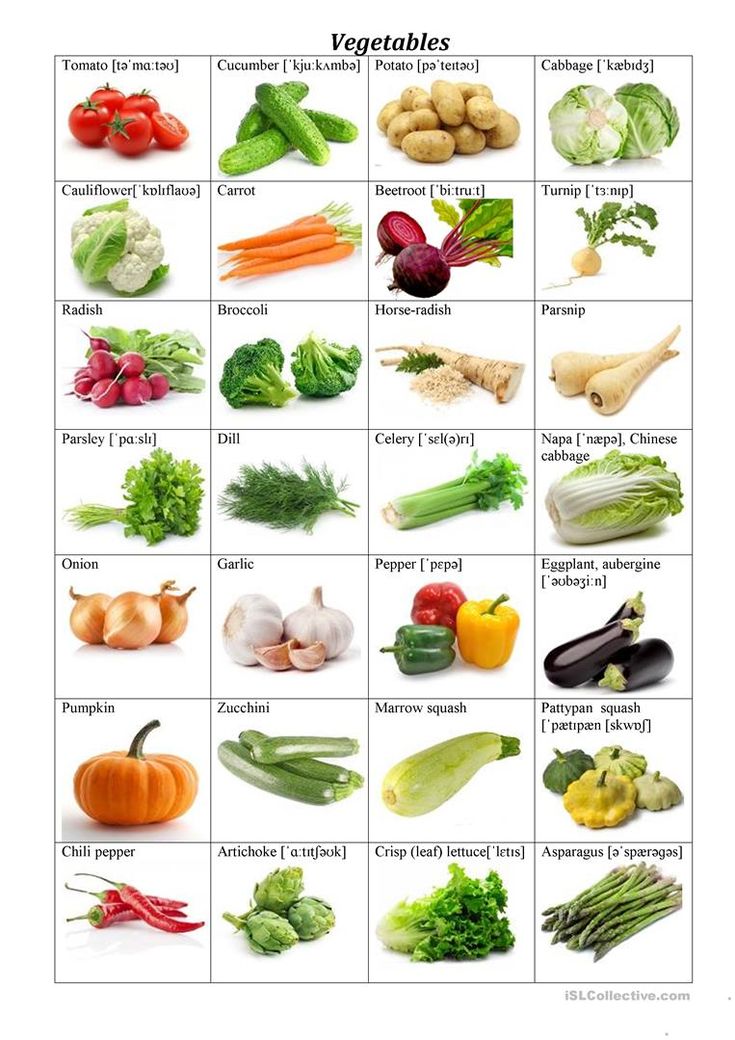 Some foods require cooking (like apples and sweet potatoes), just so they’re soft enough to puree. For softer foods (like a ripe peach or blueberries) steaming/cooking is optional, but helpful for babies 6-8 months of age because cooking makes the food easier to digest and baby will able to absorb more nutrients from the food. As you’ll see in my recipes below, I like to use a steamer basket to steam most of my fruit and veggies before pureeing.
Some foods require cooking (like apples and sweet potatoes), just so they’re soft enough to puree. For softer foods (like a ripe peach or blueberries) steaming/cooking is optional, but helpful for babies 6-8 months of age because cooking makes the food easier to digest and baby will able to absorb more nutrients from the food. As you’ll see in my recipes below, I like to use a steamer basket to steam most of my fruit and veggies before pureeing.
Bananas and Avocado
Bananas and avocado are the exception and they are great options to have on hand because you can easily just mash, thin with liquid (if needed) and serve.
How to Make Baby Food Combinations
For all of these combination recipes, I steamed each fruit/veggie separately and then made the combos using the measurements I share in the recipes. I did it this way because I was batching all of these combos at once and I’m only able to fit so much in one pot, but also because the steam time varies for most fruits and veggies (see below). Of course, you will find some recipes (on other sites) that involve cooking the items that are combined all together, but I found it easier just to steam all of my ingredients separately, measure and then blend them together. Do what feels easiest for you!
Of course, you will find some recipes (on other sites) that involve cooking the items that are combined all together, but I found it easier just to steam all of my ingredients separately, measure and then blend them together. Do what feels easiest for you!
How to Blend Baby Food
Once your fruit/veggies are cooked, it’s time to blend. For this you can use a blender, food processor or even an immersion blender. I’ve been using my Vitamix and LOVE it for making baby food because it’s really powerful and makes the blends so smooth and creamy. Some foods don’t need to be blended for babies who are okay with a more chunky texture. You can simply mash them well with a fork.
Peeling the Fruit and Veggies
I highly recommend peeling your fruits and veggies because peeling results in smoother purees and makes the food easier for baby to digest. Some foods, like carrots, should be peeled before cooking, but other foods like sweet potato, apples, peaches and pears tend to have skin that peels right off after steaming. Ultimately it’s up to you whether you want to peel the fruit/veggies before or after steaming. Test it both ways and decide which option is easier for you. I’m team peel after steaming!
Ultimately it’s up to you whether you want to peel the fruit/veggies before or after steaming. Test it both ways and decide which option is easier for you. I’m team peel after steaming!
- 1 avocado
- 1 bunch of kale
- 1 sweet potato
- 1 bunch asparagus
- 1 banana
- 2 apples
- 2 pears
- 4 peaches
- 1 pint blueberries
- 1 pineapple
- 1 mango
- quinoa
- ground flax
Steaming Time For the Fruits and Veggies
As I mentioned above, it’s recommended that most fruits and veggies (even soft ones) are steamed (or cooked) before serving babies who are 6-8 months. If your baby is older you can experiment with using fresh blueberries, peaches, pears, pineapple and mango that hasn’t been steamed, so long as the fruit is ripe and soft. I actually used fresh blueberries when making the blueberry banana quinoa flax combo.
- Sweet potato: 12-15 minutes
- Apple: 10-12 minutes
- Asparagus: 7-13 minutes
- Blueberries: 5-10 minutes
- Peach: 2-4 minutes
- Pear: 10-12 minutes
- Pineapple: 5-10 minutes
- Mango: 5-10 minutes
Frozen fruit and veggies also work for these recipes. You’ll likely just need to steam them a bit longer.
You’ll likely just need to steam them a bit longer.
6 Easy Baby Food Combinations
Here are six different baby food combinations. I’ve listed them in order of the level of complexity from the least complex (peach pear) to most complex (blueberry banana quinoa and flax).
Peach PearIngredients: 2 steamed and peeled pears and 3 steamed and peeled peaches + water or breast milk to thin (if needed)
Asparagus AppleIngredients: 1 bunch of steamed asparagus, 1 steamed and peeled apple + water or breast milk to thin
Sweet Potato Apple CinnamonIngredients: 1 steamed and peeled sweet potato, 1 steamed and peeled apple, pinch of cinnamon + water or breast milk to thin
Avocado Peach Pineapple KaleIngredients: 1 avocado, 1 steamed and peeled peach, 1/2 cup steamed pineapple and 1/2 cup of steamed kale + water or breast milk to thin (if needed)
Pineapple MangoIngredients: 1 cup steamed pineapple + 1 cup steamed mango + water or breast milk to thin (if needed)
Blueberry Banana Quinoa Flax
Ingredients: 1 pint steamed blueberries, 1/2 cup cooked quinoa, 1 ripe banana, 2 Tablespoons of ground flaxseed + water or breast milk to thin (if needed)
How to Store Homemade Baby Food
Once you have the baby food blended to the consistency you want, let the mixture cool and then transfer into BPA-free storage containers or into an ice cube tray. I’ve been using silicone ice cube trays and these 4 oz glass storage containers. The ice cube trays are great for younger babies who aren’t eating as much volume because you can defrost one cube at a time. While the 4 oz jars are great for older babies who are eating more than 1 oz at a time.
I’ve been using silicone ice cube trays and these 4 oz glass storage containers. The ice cube trays are great for younger babies who aren’t eating as much volume because you can defrost one cube at a time. While the 4 oz jars are great for older babies who are eating more than 1 oz at a time.
We had the ice cube trays on hand, and I just recently bought the WeeSprout glass storage containers that are specifically for baby food. I like that they have measurements on the side of the jars and that they’re glass instead of plastic (no worry about BPA). They are also freezer, dish-washer and microwave-safe. Plus they come with colorful lids that you can write on with a dry eraser marker to note the item and date.
When using the ice cube trays, I like to let the food freeze overnight (or until solid) and then transfer the cubes to a freezer bag so I can free up the ice cube tray for more food prep. I used plastic freezer bags for these photos but have since purchased reusable Stasher bags to use. They’re freezer safe and non-toxic and a healthier option for the environment.
They’re freezer safe and non-toxic and a healthier option for the environment.
The baby food combos will keep in the fridge for 2-3 days and in the freezer for up to 3 months.
Can You Freeze Baby Food Made with Frozen Fruit or Veggies?
Yes, you can freeze baby food that has been made with frozen fruit or veggies as long as you have cooked the frozen foods first. You shouldn’t let frozen foods thaw (without cooking), puree and re-freeze.
Can You Freeze Baby Food Made with Breast Milk or Formula?
Freezing baby food that has been mixed with fresh breast milk is totally fine, however you should not freeze baby food that has been mixed with previously frozen breast milk. Frozen and thawed breast milk should never be re-frozen.
Most formula companies don’t recommend freezing formula, but from what I’ve read it’s okay to freeze homemade baby food that has been mixed with formula to thin.
Another option is to freeze the baby food purees without adding any liquid. With this method you can thaw the baby food puree in the fridge overnight and then thin the food to the desired texture with breast milk or formula right before serving.
With this method you can thaw the baby food puree in the fridge overnight and then thin the food to the desired texture with breast milk or formula right before serving.
This post all about freezing baby food has a ton of great insight and tips.
Don’t Forget to Label
I highly recommend labeling any baby food you make before storing it! It’s amazing how quickly you forget what day you prepped the food once it goes into the fridge or freezer. #mombrain
How to Reheat or Thaw Frozen Baby Food
To thaw frozen baby food, I recommend taking the jar out of the freezer the night before you want to use it so it can defrost in the fridge overnight. If you need to use it right away, you can thaw it using a water bath. Some people will recommend microwaving the frozen puree using the defrost setting, but I prefer these two methods:
- Defrost in the refrigerator: Place frozen puree cubes into a jar or baby’s serving dish, cover, and place in the refrigerator overnight.
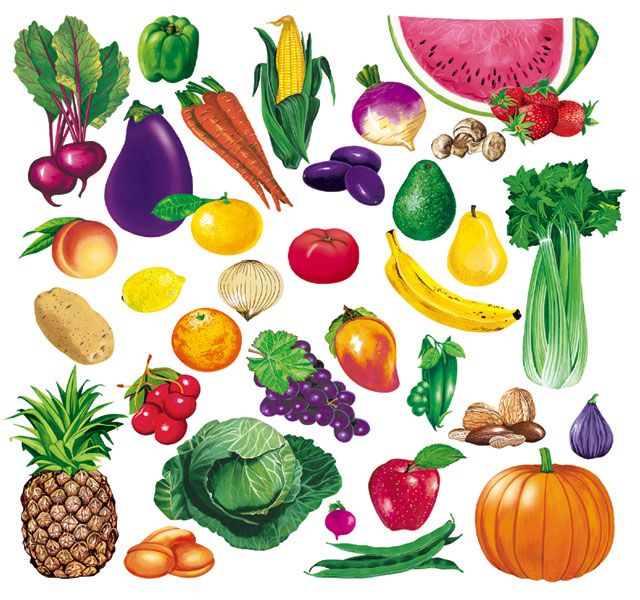 If you stored the puree in a jar or storage container, simply place the jar the fridge.
If you stored the puree in a jar or storage container, simply place the jar the fridge. - Water bath: Place frozen pureed cubes in a small container and set in another larger container with warm water. Replace the water as needed. Once defrosted, portion the food into individual bowls, cover, and refrigerate until serving.
Be sure to use any of the defrosted food within 48 hours of being defrosted and do not re-freeze.
More Recipes for Babies and Toddlers
- 10 Baby Food Purees (Stage 1)
- Baby Pancakes
- How to Make Oatmeal For Babies
- Carrot Baby Food
- Peach Baby Food
- Baby (+ Toddler) French Toast
- Applesauce
- Baby Yogurt Melts
- Butternut Squash Puree
- Sweet Potato Puree
6 Baby Food Combinations
4 from 93 votes
6 easy and tasty baby food combo recipes: Sweet Potato Apple, Asparagus Apple, Blueberry Banana Quinoa Flax, Peach Pear, Avocado Peach Pineapple Kale and Pineapple Mango.
Print Recipe Pin Recipe
Prep Time 10 minutes
Cook Time 20 minutes
Total Time 30 minutes
Servings 6
Peach Pear
- 3 steamed and peeled peaches
- 2 steamed and peeled pears
- water, breast milk or formula to thin (I didn’t need extra liquid for this one)
Asparagus Apple
- 1 bunch of steamed asparagus
- 1 steamed and peeled apple
- water, breast milk or formula to thin
Sweet Potato Apple Cinnamon
- 1 steamed and peeled sweet potato
- 1 steamed and peeled apple
- pinch of cinnamon
- water, breast milk or formula to thin
Avocado Peach Pineapple Kale
- 1 avocado
- 1 steamed and peeled peach
- 1/2 cup steamed pineapple
- 1/2 cup of steamed kale
- water, breast milk or formula to thin (I didn’t need extra liquid for this one)
Pineapple Mango
- 1 cup steamed pineapple
- 1 cup steamed mango
- water, breast milk or formula to thin (I didn’t need extra liquid for this one)
Blueberry Banana Quinoa Flax
- 1 pint steamed blueberries
- 1/2 cup cooked quinoa
- 1 ripe banana
- 2 Tablespoons of ground flaxseed
- water, breast milk or formula to thin (I didn’t need extra liquid for this one)
Pick which combo you want to make, steam the fruits and veggies (using the steam times listed in my chart above).
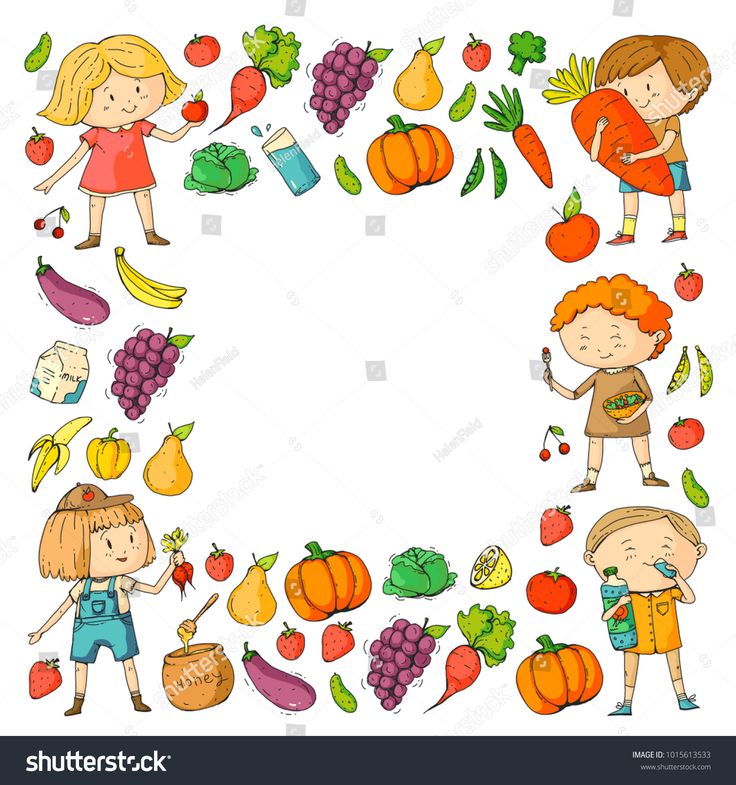
Add all ingredients for the combo you’re making into a high powered blender or a food processor. Blend until you reach the consistency you desire. You can make the purees smooth and more liquidy for young babies or thicker and chunkier for older babies.
Serving: 1/6 of peach pear recipe Calories: 63kcal Carbohydrates: 16g Protein: 1g Sodium: 1mg Potassium: 211mg Fiber: 3g Sugar: 12g
DID YOU MAKE THIS RECIPE?
Please leave a comment and star rating on this post and share on social media using the hashtag #eatingbirdfood. I love seeing your recipe shares!Baby puree at home: recipes
Baby puree from vegetables and fruits at home: cooking secrets
Vegetable and fruit puree often becomes the first meal of the baby after breast milk or formula, so many mothers prefer to cook it on their own. Although modern manufacturers convince us that baby food is devoid of preservatives and harmful additives, fresh vegetables and fruits are much healthier, especially when it comes to infant nutrition. Yes, and cooking baby puree at home is not so difficult. nine0005
Yes, and cooking baby puree at home is not so difficult. nine0005
Vegetables or fruits?
Let's try to make baby puree for our beloved baby. Despite the fact that pediatricians of the last century recommended starting complementary foods with fruits, it is better to first introduce the child to vegetables - modern doctors and nutritionists have come to this conclusion. Boiled vegetables do not irritate the gastrointestinal tract, are better absorbed, satisfy hunger, do not cause allergies and increased gas formation. In addition, vegetables do not contain fructose, which irritates the pancreas. And one more weighty argument in favor of the fact that it is better to start with vegetables - fruits are tastier, and if the baby tries them first, he will refuse vegetables, because they will seem to him more insipid. nine0005
How to prepare baby vegetable puree
What can baby puree be made of? The ideal puree for the first feeding is from cauliflower or zucchini. A little later, you can introduce pumpkin, broccoli, carrots, potatoes and green peas. Before cooking, vegetables are washed well, peeled, cut into pieces and cooked - steamed, in the oven or in the usual way, in water. The first two methods are preferable because oven roasting and steaming preserve the vitamins, minerals, nutrients, and natural color in the vegetables. And most importantly - such vegetables are much tastier. Some nutritionists recommend boiling vegetables with their skins on before peeling them, so choose your own cooking method. nine0005
A little later, you can introduce pumpkin, broccoli, carrots, potatoes and green peas. Before cooking, vegetables are washed well, peeled, cut into pieces and cooked - steamed, in the oven or in the usual way, in water. The first two methods are preferable because oven roasting and steaming preserve the vitamins, minerals, nutrients, and natural color in the vegetables. And most importantly - such vegetables are much tastier. Some nutritionists recommend boiling vegetables with their skins on before peeling them, so choose your own cooking method. nine0005
If you do have to cook vegetables in a saucepan, use an enamel pot, add less water and put the vegetables in boiling water. Boil until soft, but do not overcook vegetables and fruits, otherwise they will become tasteless and lose a lot of vitamins. Ready vegetables are chopped with a blender until smooth and slightly diluted with water, vegetable broth, breast milk or mixture to a gruel state, since the child does not yet know how to digest thick food. Small pieces of vegetables in puree sometimes cause the baby to refuse to eat, so the knives in the blender should be well sharpened, and if there is no technique, you can grind the vegetables through a sieve. Salt and spices are usually not added to baby vegetable puree, and if the baby is more than 6 months old, you can put a little butter in the puree. nine0005
Small pieces of vegetables in puree sometimes cause the baby to refuse to eat, so the knives in the blender should be well sharpened, and if there is no technique, you can grind the vegetables through a sieve. Salt and spices are usually not added to baby vegetable puree, and if the baby is more than 6 months old, you can put a little butter in the puree. nine0005
A few rules for making baby puree at home
- Use only fresh vegetables and fruits.
- Water for cooking vegetables must be filtered or bottled.
- If you are using frozen foods, choose only whole fruits and vegetables as they retain the most nutrients.
- All utensils for preparing baby food should be perfectly clean, so if the knife falls on the floor, it should be washed well. Also, the presence of pets in the kitchen during the cooking process is not allowed. nine0026
- Avoid vegetables and fruits high in nitrates, such as spinach, lettuce, beets, melons, and watermelons, in infants' diets.

- Store-bought vegetables are recommended to be soaked in water to remove nitrates: 1-2 hours for this, up to 24 hours for potatoes.
- Mix sour-tasting fruits and berries with sweet fruits - for example, blackcurrant goes well with a banana or pear. Sour puree is unlikely to please the baby. nine0026
- Give your child only fresh food, but yesterday's puree from the refrigerator is better to eat yourself.
DIY fruit puree for children
Children are more likely to eat fruit puree, because fruits are tastier and sweeter. Fruits contain a large amount of vitamins, minerals, trace elements, fiber and antioxidants, so they are very useful for a growing organism. However, fruits are strong allergens, especially berries, bananas, pomegranates and apricots, so they should be given with caution, watching the child's reaction. The most low-allergenic fruits are apples and pears, so it is better to start complementary foods with them, and then introduce all other fruits. First, the baby is fed with a one-component puree made from only one product, and then you can mix different vegetables and fruits, and not only among themselves. Very tasty combinations of fruits and vegetables, such as apples and zucchini, pumpkins and pears. nine0005
First, the baby is fed with a one-component puree made from only one product, and then you can mix different vegetables and fruits, and not only among themselves. Very tasty combinations of fruits and vegetables, such as apples and zucchini, pumpkins and pears. nine0005
Fruits must be of good quality, without damage, ripe and juicy, and the rules for preparing fruits do not differ from the rules for cooking vegetables. Naturally, fruit puree is not sweetened with honey and sugar - the later the child learns the taste of sugar, the stronger his health will be.
Aromatic pumpkin puree
Babies love to eat pumpkin because of its pleasant sweet taste, besides pumpkin is very healthy. It contains a whole storehouse of various vitamins, including vitamin T, which normalizes the metabolism in the body. For pumpkin puree, small pumpkins are suitable, since large fruits are not as tasty and difficult to peel. nine0005
Cut the pumpkin in half, and then into small slices, one or two of which (depending on the appetite of the crumbs) cut into cubes. Boil the pumpkin in a double boiler or in water for 20 minutes, while warm, beat with a blender to a smooth puree and dilute if necessary with water or a mixture. Add oil and salt depending on the age of the child.
Boil the pumpkin in a double boiler or in water for 20 minutes, while warm, beat with a blender to a smooth puree and dilute if necessary with water or a mixture. Add oil and salt depending on the age of the child.
Gentle Broccoli Puree
One of my favorite homemade baby puree recipes is broccoli. This cabbage is extremely useful because it contains potassium, iron, calcium and other valuable substances. It has much more vitamin C than lemon, and the reason for its nutritional value is its high protein content. nine0005
Separate the broccoli into florets, wash thoroughly and steam for 20 minutes. Cabbage cooks faster in water - fresh broccoli will take 7 minutes, and frozen - about 15 minutes. Broccoli puree does not need much water, it should lightly coat the vegetables. After the cabbage becomes soft, chop it in a blender or pass through a sieve. If you're mashing for kids older than a year old, be sure to add butter - the little ones will gobble up broccoli on both cheeks! nine0005
How to make baby pear puree at home
Pear is a very delicate, tasty and healthy fruit that rarely causes intolerance. In addition to the high vitamin value, the pear has other beneficial properties - it facilitates digestion and removes toxins from the body.
In addition to the high vitamin value, the pear has other beneficial properties - it facilitates digestion and removes toxins from the body.
For baby food, choose green pears to reduce the risk of allergies, which are rare among babies. Peel the fruits from the peel and core with seeds, and then stew the pear in a bowl with a thick bottom in a small amount of water for 15 minutes. Let the pear cool slightly and puree it in a blender with a little of the remaining pear broth. For large kids, fruits can not be boiled, but add half a teaspoon of natural honey to the puree. nine0005
Zucchini and apple puree
Little gourmets will love this delicious puree, besides, zucchini is considered the most hypoallergenic vegetables, which, due to their high potassium content, have a beneficial effect on the heart. Apples contain iodine, iron and phosphorus, and due to the high concentration of vitamin C, apples help in the prevention of colds and viral infections.
Wash the zucchini and apples well, de-seed them, cut into pieces and cook in a saucepan for about 20 minutes, considering that the zucchini will cook 5 minutes faster. By the way, apples are steamed for 15 minutes, zucchini - 10 minutes. Next, vegetables and fruits are chopped in a blender, mixed and brought to a boil. For allergic children, this is the best side dish! nine0005
By the way, apples are steamed for 15 minutes, zucchini - 10 minutes. Next, vegetables and fruits are chopped in a blender, mixed and brought to a boil. For allergic children, this is the best side dish! nine0005
Exotic mango
Sometimes you can pamper your baby with exotic fruits - for example, make mango puree. This is a very delicate fruit with an original taste, containing 12 amino acids and improving sleep.
Choose only ripe fruits that are soft and reddish-yellow in color. Peel the mango from a thick skin and a large bone, put the pulp in a blender, add 2 tbsp. l. water and mash it, and then heat it in a saucepan for several minutes. For a baby up to a year old, it is better to give mashed potatoes with heat treatment to facilitate digestion, and older children can be fed raw mangoes. nine0005
Carrot and Potato Puree
Make normal potato puree without oil. Peel the carrots, grate them and stew them with butter and vegetable broth - about 1 tsp is required for 200 g of carrots. butter and 150 g of broth. When the carrot becomes very soft, wipe it through a sieve, and then put it on a plate, put mashed potatoes on the second half. Let the child choose whether to mix two types of puree for him or eat separately!
butter and 150 g of broth. When the carrot becomes very soft, wipe it through a sieve, and then put it on a plate, put mashed potatoes on the second half. Let the child choose whether to mix two types of puree for him or eat separately!
Pumpkin and apple puree
This sweet, sugar-free pumpkin-apple puree, cooked in a double boiler, is suitable for children who are already accustomed to “adult” food and are able to perceive a new unusual dish. It is better to take a pumpkin with a gray or green skin and with bright pulp - such fruits contain more vitamins and other useful substances. Apples are green because they have fewer allergens.
Cut pumpkin and apple flesh without peel or seeds into pieces, place in a steamer and cook for 20 minutes. Grind pumpkin, apples and raisins in a blender or by hand with a pusher if the child has already learned to chew. They say that this puree is very good for skin and hair, and you can check the truth of this statement yourself if you start feeding this dish to your baby. nine0005
nine0005
In autumn, you can take care of preparing vegetables for baby purees. Some vegetables, such as pumpkin, carrots and apples, are stored fresh, and zucchini, broccoli, berries are frozen in small portions, because due to frequent freezing and thawing, vegetables lose vitamins and become tasteless. You can roll up fruit and vegetable puree in jars, but this snack should not be given to babies. Remember that the taste of vegetables determines whether the baby will love them in the future, so try to prepare an appetizing and tender puree - for health and good mood! nine0005
Vegetables in the child's diet
Reviewer Kovtun Tatyana Anatolievna
8613 views
September 15, 2021
nine0005
Vegetables should be eaten every day, because they contain many important substances, such as organic acids, potassium, iron, dietary fiber 1 .
But what if the child performs acrobatic wonders when you try to offer him some broccoli or a piece of pumpkin? In this article we will talk about vegetable complementary foods, share tips on how to help your baby fall in love with vegetables, and talk about the best children's vegetables.
Vegetable food
Babies can get acquainted with vegetables already at the first stage of the introduction of complementary foods - your pediatrician will definitely tell you when it will be possible. In Russia, the recommended age for the introduction of complementary foods is from 4 to 6 months. Vegetable complementary foods begin with 10 grams of puree, and closer to a year, parents bring this rate to 150 grams per day.
In our article, we talked about what should be in mashed potatoes for the first feeding.
The assortment of FrutoNyanya baby food includes the First Choice line, which includes hypoallergenic* monocomponent vegetable purees for the first introduction of vegetable complementary foods and a variety of mono- and multicomponent purees for already "advanced" gourmets.
Rospotrebnadzor says 3 that children aged 1 to 3 years should receive up to 200 grams of vegetables per day. By the way, potatoes are not included in this amount, they have their own "standards" - no more than 120 grams. nine0005
How to help your baby love vegetables
So, the baby grew up, and the pediatrician gave the green light to the introduction of solid food into the diet. And how now to persuade the baby to eat vegetables? We have several ways. According to the recommendation of the Union of Pediatricians of Russia 4 , a child should eat a variety of vegetables and fruits at least five times a day.
Set an example
Children love to imitate adults. The child should see how you enjoy eating vegetables, preparing various dishes from them, or simply cutting them as a snack. The kid, most likely, will reach for a bowl of salad himself. But if there are not enough vegetables in your diet, then it will be difficult to convince the baby of the need for such a product.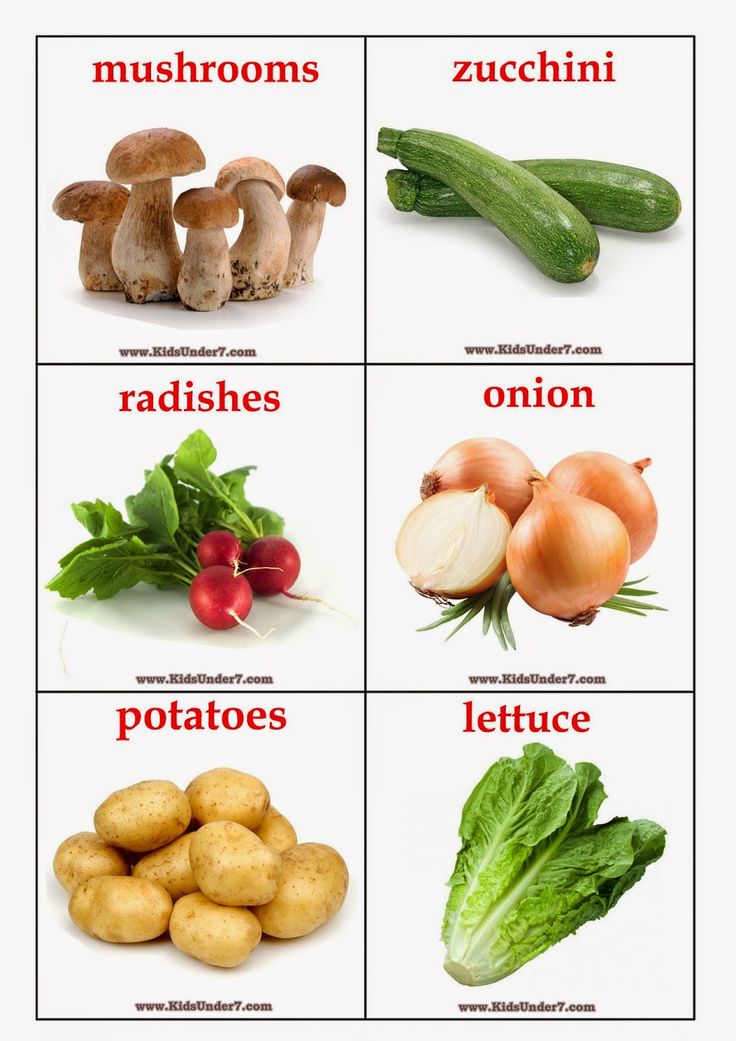 So let's start with ourselves. nine0005
So let's start with ourselves. nine0005
Not fond of disguising vegetables
For example, if the baby is crazy about meatballs, sometimes you can add a little grated carrot to them. But it is important that the child knows and loves vegetables in their original form, because our goal is to teach the child to love a variety of vegetables.
Let the branch of cauliflower be not a "tree", but cauliflower - so beautiful and unique by nature. It is important for a kid to explore the world in all its diversity, without camouflage techniques. nine0005
We keep trying
Remember your first reaction to something new: most likely, you will be suspicious at first. So for children, the phrase “I don’t want to” is absolutely normal in response to those vegetables that they try for the first time. What to do? Try adding this vegetable to your baby's familiar and favorite foods, but don't overdo it. Some parents need a dozen tries.
But there should be no punishment for refusing to eat vegetables.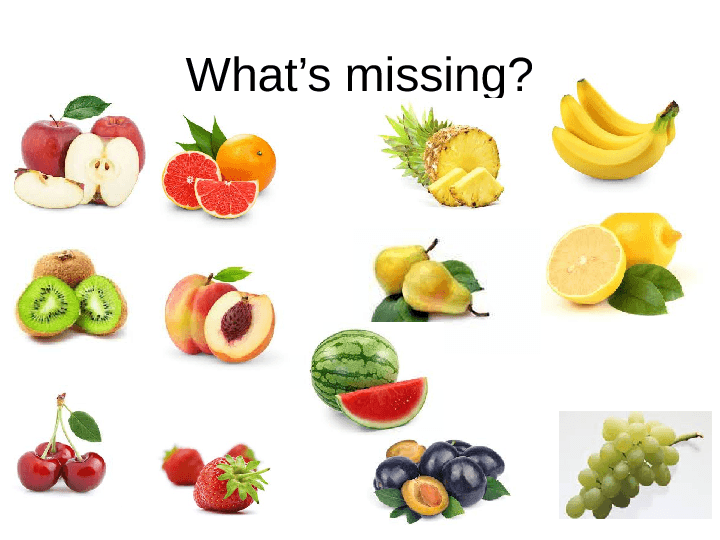 Just ignore it and give your child vegetables another time or some time after dinner. nine0005
Just ignore it and give your child vegetables another time or some time after dinner. nine0005
Cooking vegetables together
The child is more likely to want to try the dish, in the creation of which he participated.
How to organize it:
- choose vegetables together in the store - their variety on the shelves will surely interest the little one
- offer the baby to wash them by himself, even if he gets wet or wet everything around
- Let your child put the vegetables into the pot before cooking
We praise the child
Just tell your baby: “Anna, I am very pleased that you tried peas for dinner today. Well done!" But there is a fine line here too. It is important that the baby eats vegetables because he really likes them, and not waiting for your approval.
Don't use the "eat zucchini, get cookies" scheme. The child will be interested in sweets. It is important for us that vegetables become a natural and indispensable part of the diet, and not a hated obstacle on the way to "sweets". It can also lead to eating disorders and overeating. nine0005
Making vegetable dinners varied and fun
Offer vegetables of different shapes, colors and textures - there is a high probability that the child will definitely find something to their liking. Post funny faces or pictures from vegetables. For example, you can attach zucchini cat ears, pea eyes and carrot antennae to the usual mashed potatoes.
Children's vegetable guide
Recommended ways to prepare vegetables for children are stewing, boiling, steaming or baking. Those vegetables that can be eaten raw should be thoroughly washed. nine0005
First food
- Zucchini
- Cauliflower
- Broccoli
Further, other vegetables are introduced into the diet:
- Pumpkin
- Carrot
Experts recommend using combinations of 3-4 vegetables to make vegetable purees 2 .
Older than
- Avocado
- String beans
- Bell pepper
- Potatoes and sweet potatoes
- White cabbage
*Clinical study at the NCCH (currently the National Medical Research Center for Children's Health of the Ministry of Health of the Russian Federation) from 2011 to 2020 underwent 21 FrutoNyanya complementary foods.








